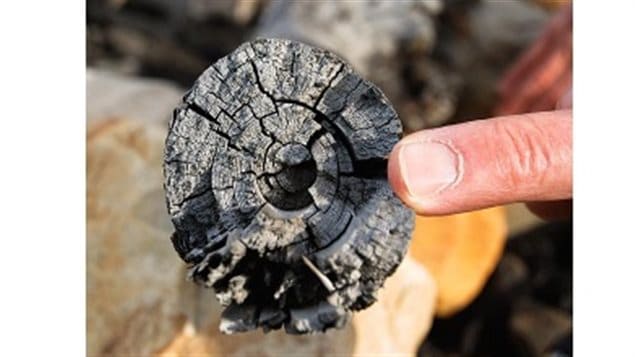Millions of years ago, the Arctic was covered in fairly dense vegetation and forest.
There was also a wide variety of animals at various times, from ancient turtles, alligators, camels, and more.
Ancient forest- massive climate change Arctic
As the climate changed in the Arctic from the wetter, temperate Eocene where the mean average temperature was around 8 degrees Celsius, (with warm month highs around 19-20 C, and cold 0-3 C), to what we know today, the forests, mammoths and other animals disappeared.
Early explorers in the high Arctic were surprised to find large tree trunks, branches and even leaves in the frozen desolate high Arctic archipelago.
In 1999, scientists discovered (or re-discovered ) the mummified remains of a forest on Ellesmere Island. Erosion from a river had exposed a slope where the forest remains were found.

The trees, leaves and seed pods were mummified , not fossilized, as they were probably buried quickly by landslides and so protected from water and air.
American scientists were later able to identify the trees as pine, birch, and spruce, but the site was very disturbed by their activities.
Another ancient forest of somewhere between 33 and 50 million years old is on Axel Heiberg Island, Canada’s seventh largest island, second most northerly, and currently uninhabited
It was to be granted protection as a park in Nunavut, but it will now have to wait at least another year.

According to an article in the Nunatsiaq News by Jane George, Nunavut’s Environment Minister says the $215,000 for the feasibility study for a territorial park will be held over to the next fiscal year. About $300, 000 has already been spent on studies.
The idea first came up in 2010, and the government said at that time that a territorial park designation could take up to ten years.
It will be named Napartulik, “where there are trees,” for the place where the large trees once stood only to be killed off and buried by the sandy soil of the Geodetic Hills.
Erosion of the Geodetic Hills-fossil forest

Here too there are stumps, logs, and leaves that are also mummified but not fossilized in spite of the great age of tens of millions of years.
Whereas the Ellesmere forest was found first by the Greely expedition in the 1880s, and again by scientists in 1999, it has been studied several times since and has been greatly disturbed. It is still without protection.
Residents in the north would like to see the park created on Axel Heiberg to protect the area from exploitation.
The stumps, logs, leaves and other remnants have become exposed due to erosion in recent times. Once exposed to air, they become extremely brittle and very easily damaged by the slightest disturbance.






For reasons beyond our control, and for an undetermined period of time, our comment section is now closed. However, our social networks remain open to your contributions.